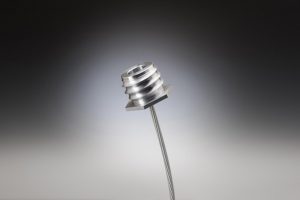 Bergen Cable explains the adverse effects of bending wire rope
Bergen Cable explains the adverse effects of bending wire rope
November 28, 2018 REDWIRE is news you can use from leading suppliers. Powered by FRASERS.
Posted by Bergen Cable Technology, Inc
Mfr Mechanical Cable, Cable Assemblies & Push-Pull Controls. Original Mfr Of Safety Cable, A Patented Fastener Reten... Read more
Subscribe
Free REDWIRE e-newsletter

Bergen Cable can suggest ways to minimize the effects of wire-rope bending.
In addition to its selection of cable products, Bergen Cable is an excellent source of industrial wire rope. And Bergen’s service to customers does not stop at providing great solutions – the company acts as a team of experts who help clients get the most out of these products. The Bergen website contains valuable resources about cable and wire-rope products, including a guide to the negative effects of wire-rope bending.
Fatigue and loss of strength
Many wire ropes are subject to bending around sheaves or drums, and the service one gets from them often depends on the sheaves’ and drums’ locations. Users should lubricate industrial wire rope properly to make it effective around these objects, since its wires and strands slide on each other during bending.
Loss of strength often results from the inability of strands and wires to adjust to changed positions during rope bending, according to Bergen Cable. The strength of wire rope tends to lower in a marked degree as the sheave diameter gets smaller with respect to the rope diameter. This strength loss from bending over sheaves tends to be around four per cent. In addition, repeated flexing of wires develops bending loads that setup points of stress concentration, even when within the wire’s elastic limit.
Another adverse effect of bending is fatigue. This appears in the form of small cracks in wires at overstressed foci, which propagate under repeat stress cycles until the remaining sound metal cannot handle the bending load. This leads to broken wires that show no sign of contraction of cross-section.
Since many factors affect the operational lifespan of industrial wire rope, it is impossible to determine what minimum size of sheave or drum will enable the rope to perform effectively. Light loads and slow speeds allow smaller sheaves and drums to be used without causing premature wire fatigue, while reverse bends – i.e., bending a rope in one direction and then in the other direction – can lead to excessive and premature fatigue. If reverse bends are necessary to the application, larger sheaves are required to minimize damage.
For more information, contact Bergen Cable.
Share
Posted by Bergen Cable Technology, Inc
Mfr Mechanical Cable, Cable Assemblies & Push-Pull Controls. Original Mfr Of Safety Cable, A Patented Fastener Reten... Read more
